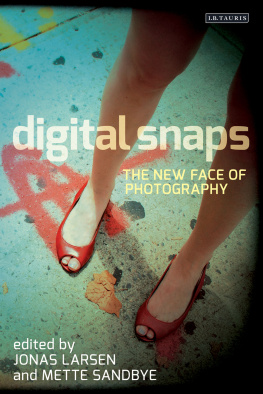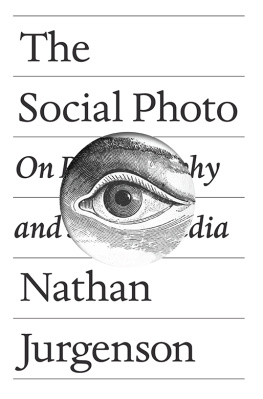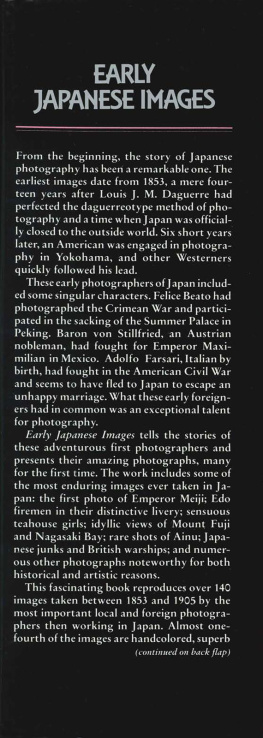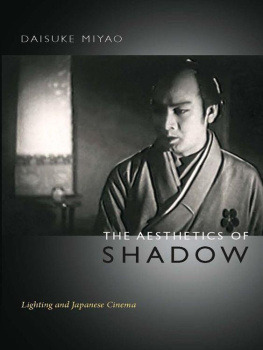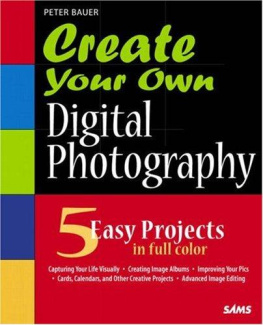Stanford University Press
Stanford, California
2015 by the Board of Trustees of the Leland Stanford Junior University. All rights reserved.
No part of this book may be reproduced or transmitted in any form or by any means, electronic or mechanical, including photocopying and recording, or in any information storage or retrieval system without the prior written permission of Stanford University Press.
Printed in the United States of America on acid-free, archival-quality paper
Library of Congress Cataloging-in-Publication Data
Ross, Kerry, author.
Photography for everyone : the cultural lives of cameras and consumers in early twentieth-century Japan / Kerry Ross.
pages cm
Includes bibliographical references and index.
ISBN 978-0-8047-9423-7 (cloth : alk. paper) ISBN 978-0-8047-9564-7 (pbk. : alk. paper)
1. PhotographySocial aspectsJapanHistory20th century. 2. JapanSocial life and customs19121945. I. Title.
TR105.R67 2015
770.952dc23
2015007262
ISBN 978-0-8047-9563-0 (electronic)
Typeset by Bruce Lundquist in 10/14.5 Sabon
Kerry Ross
PHOTOGRAPHY FOR EVERYONE
The Cultural Lives of Cameras and Consumers in Early Twentieth-Century Japan
Stanford University Press
Stanford, California
For Carol,
who, though she didnt make it to see this book in print,
was my most enthusiastic cheerleader from the beginning
And for Asher,
who everyday inspires me to be inquisitive
and reminds me to play
TABLE OF CONTENTS
ILLUSTRATIONS
PREFACE
The idea for this book began when I started research on the history of modernist photography in Japan. Once in the archives, contrary to my expectations based on all earnest, and I thought, thorough, preparations, I found that most materials concerning photography during the early twentieth century were directed toward amateur photographers. Instructional writing, amateur photographs, and advertisements fill page after page of how-to books and photography magazines from the time. Indeed, postwar scholars have made modernist photography stand in for nearly all photographic activity of that time. To date, most scholarly work on the subject has focused on the origins and development of a single strand of art photography, with particular attention to the creative efforts of a select few individual artists and theorists. Rarely have historians paid attention to the role of the typical middle-class consumer in photographic practices, yet it was these ordinary photographers to whom the majority of products, publications, and ideals of photography were marketed. This inattention to the wider photographic archive has created a skewed historical understanding of the social and cultural meaning of photography. What I show in the following pages is that photographic practice can be more accurately understood as the product of a complex relationship between middle-class consumer behavior, profit-driven camera companies, and movements to popularize photographic art. The aim of this study is to resituate the historical discussion of photography in Japan, one that has been dominated by concerns with aesthetic representation, in order to reveal the everyday meaning of photography for ordinary Japanese people in the early twentieth century.
At Columbia University, Henry Smith, Carol Cluck, and Andreas Huyssen were instrumental to my thinking about the project and, in particular, about how to use images as sources for historical analysis. Kim Brandt and Eugenia Lean entered the fold a bit later but have continued to support the project with much-appreciated enthusiasm. My cohort at Columbia, especially Leila Wice, Sarah Kovner, Lori Watt, Ken Oshima, and Jonathon Zwicker, always challenged me to push my ideas further.
Later, a Fulbright IIE Dissertation Research Fellowship provided the opportunity to conduct the bulk of the research for this project in Tokyo from 1999 to 2001. Columbia generously funded the writing of this project by the Junior Japan Fellowship, the Department of East Asian Languages and Cultures, and the Committee on Asia and the Middle East. At DePaul, the University Research Council Paid Leave program generously supported me as I finished some crucial revisions to the book in 20112012. The University Research Council also helped fund publication of the images found in this book. DePauls College of Liberal Arts and Social Sciences supported me in 2012 with a Summer Research Grant. The Japan Foundation Short-Term Research Grant made it possible for me to return to Japan (and to live in Nihonbashi!) for two months to complete the research.
So many young scholars starting out in the archives in Japan, myself included, have been patiently and unstintingly supported by Yoshimi Shunya of the Graduate School of Interdisciplinary Studies at the University of Tokyo. Likewise, Sat Kenji in the Department of Sociology at the University of Tokyo cheerfully advised me at an early stage in the project. Kaneko Ryichi kindly made time for me and thoughtfully answered every question that I had about the history of Japanese photography. Okatsuka Akiko and the staff at the Research Library of the Tokyo Metropolitan Museum of Photography gave me open access to their wonderful archives. The staff at JCII Library connected to the Japan Camera and Optical Instruments Inspection and Testing Institute helped me locate some very rare copies of key sources.
Many people have taken time to read parts of the manuscript, and their criticism along the way has helped make this a better book. I am particularly grateful to Paize Keulemans, Greg Pflugfelder, and Chuck Woolridge for their thoughtful comments at an early stage. Paul Barclay, Julia Thomas, and Gennifer Weisenfeld, all of whose work has been inspirational to me, generously answered many of my questions along the way.
The History Department at DePaul University has been a wonderful place for me to grow as a teacher and historian. I am particularly indebted to Tom Foster, whose wise, unadulterated advice on all matters intellectual and professional helps me stay sane. Gene Beiriger, Brian Boeck, Lisa Sigel, and Amy Tyson have been nothing but supportive and have helped me at various stages in the final preparation of the book. I am also grateful for the intellectual and social camaraderie of Scott Bucking, Tom Krainz, Rajit Mazumder, Brent Nunn, Otunnu, Ana Schaposchnik, Margaret Storey, Roshanna Sylvester, Valentina Tikoff, Julia Woesthoff, and everyone else in the History Department. Ian Petchenik assisted me with the images found in this book and entertained me with his wry sense of humor. Nobuko Chikamatsu in the Department of Modern Languages, Yuki Miyamoto in the Department of Religious Studies, and Elizabeth Lillehoj in the Department of the History of Art and Architecture are wonderful colleagues in the Japanese Studies Program, my second home at DePaul.
The editors at Stanford University Press, Kate Wahl, Jenny Gavacs, James Holt, Eric Brandt, and Friederike Sundaram, have enthusiastically supported this project from the beginning. I thank them for their crucial role in making this book possible. Emily Smith, production editor, and Cynthia Lindlof, copyeditor, were extremely helpful and graciously patient during the production stage. I am also grateful to the two anonymous readers for their invaluable comments on the manuscript.
My deepest gratitude goes to my family in Minneapolis, the Thacher-Rosses, who have taken such good care of mefeeding, sustaining, and loving me, even at some of my worst moments. Marta Drews encouragement, friendship, and wisdom have been vital during some of the most trying moments in the past couple of years. This book is dedicated to Carol Thacher (19392014), stepmother extraordinaire, who would have loved to celebrate the completion of this book but, unfortunately, did not quite make it to see that happen. Aviva Rohde, in every way my surrogate mother, has never stopped believing in me and in this project. In L.A., Tokyo, New York, and Chicago, Jason Cremerius has carefully read every draft. His steadfast friendship, support, and editorial acumen have made it possible for me to finish this book. I especially wish to thank Asher Cremerius, who was born just as I was finishing the dissertation. He is the best thing that has ever happened to me, and I lovingly dedicate this book to him.
Next page








